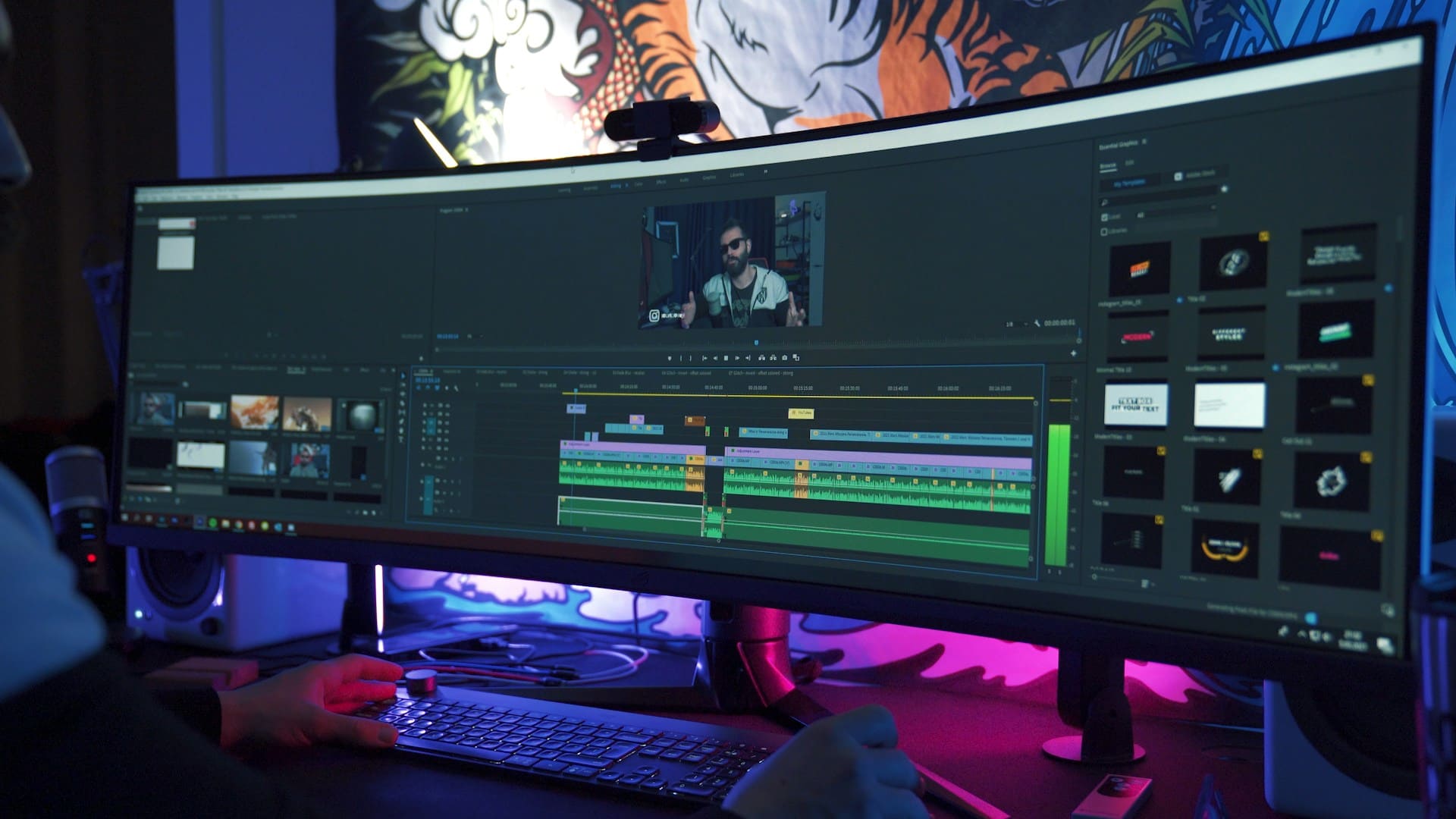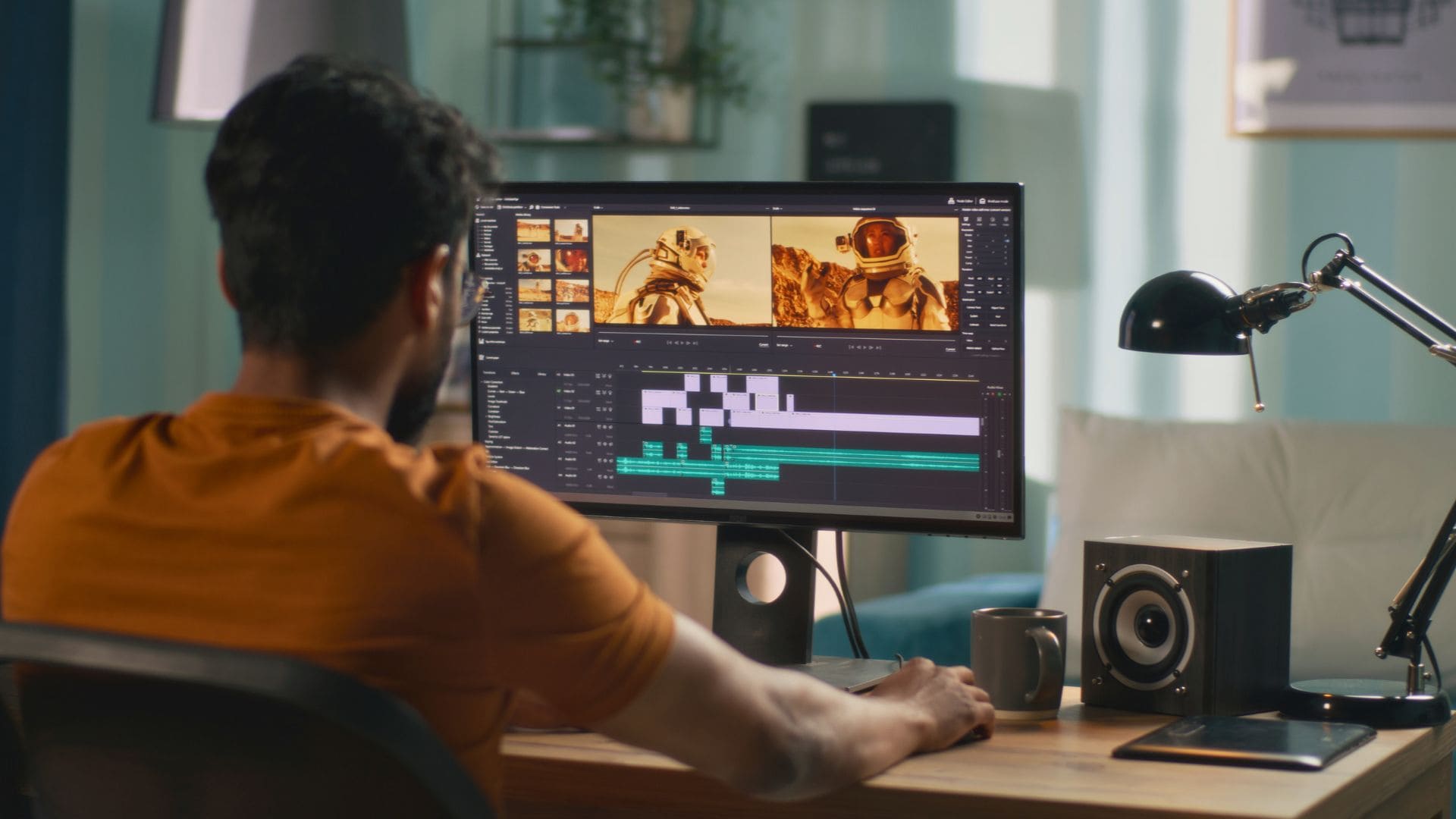In today's digital age, video editing has evolved from a specialized technical skill to an essential creative tool. Whether you're an aspiring filmmaker, content creator, or business professional, understanding video editing is crucial for creating compelling visual content.
What is Video Editing?
Video editing is the art and technical process of manipulating and arranging video footage to create a cohesive final product. It goes beyond simply cutting and joining clips - it's about crafting a narrative, evoking emotions, and delivering messages effectively through visual storytelling.
The Purpose of Video Editing
● Creating narrative flow and pacing
● Enhancing visual and audio quality
● Correcting filming mistakes
● Adding special effects and graphics
● Building emotional connections with viewers
● Maintaining audience engagement
● Meeting specific platform requirements
Understanding Video Editing Types
Linear vs. Non-Linear Editing
Linear Editing
Traditional linear editing, once the industry standard, involves editing video in a sequential manner, typically working with physical tape. While largely obsolete, understanding linear editing principles helps editors appreciate modern workflows.
Non-Linear Editing (NLE)
Modern digital editing allows for non-destructive, non-linear manipulation of footage. This approach offers:
● Immediate access to any frame
● Multiple timeline versions
● Unlimited undo capabilities
● Real-time preview of effects
● Collaborative workflows
Getting Started in Video Editing
Essential Requirements
Hardware Specifications
Professional video editing demands robust hardware:
● Multi-core processor
● Dedicated graphics card
● Minimum 16GB RAM (32GB recommended)
● Fast storage solutions (SSD)
● Calibrated display monitor
Software Selection
Choose software based on your needs and skill level:
Professional:
● Adobe Premiere Pro: Industry standard with comprehensive features
● Final Cut Pro X: Popular among Mac users
● DaVinci Resolve: Superior color grading capabilities
Intermediate:
● DaVinci Resolve (Free): Professional features without cost
● Adobe Premiere Elements: Simplified version of Premiere Pro
● Filmora: User-friendly with advanced features
Beginner:
● iMovie: Free for Mac users
● OpenShot: Open-source option
● Windows Video Editor: Basic Windows tool
Common Video Editing Techniques

1. Basic Cutting and Assembly
Master these fundamental techniques:
● Jump cuts for removing dead space
● Match cuts for smooth transitions
● Cross-cutting between parallel actions
● Montage sequences for time compression
2. Color Correction and Grading
Essential steps for professional-looking videos:
● Primary correction for exposure and white balance
● Secondary grading for creative looks
● LUT application for consistent styling
● Skin tone optimization
3. Audio Editing
Critical for professional productions:
● Dialogue cleaning and enhancement
● Music scoring and sound effects
● Audio levels normalization
● Spatial audio mixing
Career Opportunities in Video Editing
Industry Positions
The field offers diverse career paths:
● Film and Television Editor
● Content Creator
● Corporate Video Producer
● Social Media Video Specialist
● Live Event Editor
● Virtual Reality Editor
Specialization Opportunities
● Motion Graphics Designer
● Color Grading Artist
● VFX Compositor
● Sound Design Specialist
● 360-Degree Video Editor
The Future of Video Editing

Emerging Technologies
The industry continues to evolve with:
● AI-powered editing assistants
● Cloud-based collaboration tools
● Real-time rendering capabilities
● Virtual production integration
● 8K and higher resolution workflows
Industry Trends
Watch for these developments:
● Mobile-first editing platforms
● Automated content adaptation
● Virtual reality editing tools
● Blockchain for content verification
● Remote collaboration solutions
Professional Development Tips
Building Your Portfolio
- Create diverse content samples
- Document your creative process
- Showcase problem-solving abilities
- Highlight technical proficiency
- Demonstrate storytelling skills
Business Development
● Establish clear service packages
● Develop client communication protocols
● Create efficient workflows
● Build a strong online presence
● Network within the industry
Learning Resources
Online Education
● LinkedIn Learning
● Udemy
● YouTube tutorials
● Industry webinars
● Professional forums
Traditional Education
● Film school programs
● Technical certifications
● Workshop intensives
● Mentorship programs
Final Thoughts
Video editing continues to evolve as technology advances and content consumption habits change. Success in this field requires:
● Continuous learning and adaptation
● Strong technical foundation
● Creative storytelling abilities
● Understanding of audience needs
● Professional network development
For aspiring editors, the path to success involves combining technical expertise with creative vision. Start with basic projects, gradually build your skills, and stay informed about industry developments. Whether pursuing a career in film, television, social media, or corporate video, the opportunities in video editing continue to expand.



